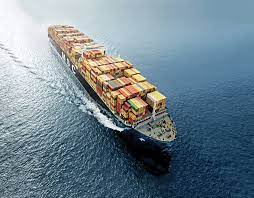New Liner Service Launched: Connecting Jeddah Port with Major Indian Ports for Enhanced Trade

A new maritime liner service has been officially launched to connect Jeddah Port on the Red Sea with two of India’s largest and most strategic ports—Mundra and Nhava Sheva. This development marks a significant enhancement in trade and shipping logistics between the Middle East and India. The newly established service aims to streamline operations, cut transit times, and bolster trade volumes, providing immense benefits for businesses and economies across both regions. By bridging key ports in Saudi Arabia and India, the initiative underlines the vital role maritime routes play in global commerce and economic growth.
Improved Maritime Connectivity
The launch of this liner service is expected to be a game-changer in the shipping industry. Jeddah Port, situated on the western coast of Saudi Arabia, plays a crucial role as a gateway to the Red Sea. Mundra and Nhava Sheva ports, located on India’s western coastline, are among the largest ports in India. Together, these ports handle a vast majority of the trade that flows into and out of their respective regions.
By connecting Jeddah with Mundra and Nhava Sheva, the service offers a direct shipping route, cutting the need for circuitous paths or stopovers at intermediary ports. This connectivity enables a more fluid trade flow, not only enhancing access for importers and exporters but also boosting operational efficiency and reliability.
Streamlined Cargo Movement and Reduced Transit Times
A key advantage of this new liner service is its capacity to streamline cargo movement and significantly reduce transit times. Previously, shipping between these two major regions often required multiple stops, leading to delays and increased costs. With the new service offering a direct route between Jeddah and India’s main ports, businesses can expect much faster and smoother shipping experiences.
Cargo handling operations at both ends are also expected to improve, with better infrastructure and facilities in place to support more efficient loading and unloading. The service will enable better scheduling and faster turnaround times, reducing port congestion and providing swifter access to markets. This is crucial for time-sensitive shipments, such as perishable goods, which require shorter transit times to preserve their value.
Supporting Growing Trade Volumes
The relationship between the Middle East and India has been one of mutual trade growth over the past decades. Saudi Arabia is India’s fourth-largest trading partner, with trade volumes in goods like oil, chemicals, and textiles continuing to rise. India, on the other hand, serves as one of Saudi Arabia’s key importers of goods like machinery, pharmaceuticals, and agricultural products. The introduction of this liner service directly supports the growing demand for streamlined trade routes between these two vibrant economies.
As the global economic landscape continues to evolve, the need for faster, more efficient logistics becomes paramount. The Middle East’s strategic location as a gateway between Europe, Asia, and Africa, coupled with India’s burgeoning economy, makes this new service an essential link in the global supply chain.
Economic Benefits for Both Regions
The economic impact of this new liner service is expected to be significant. As trade between the Middle East and India continues to expand, the liner service will not only facilitate smoother commerce but will also create opportunities for local economies. Jeddah Port, for instance, is one of the busiest ports in the region, and this service is expected to generate new job opportunities in the areas of port operations, logistics, and shipping.
On the Indian side, Mundra and Nhava Sheva ports stand to benefit from increased cargo traffic and more efficient handling processes. The Indian government has been heavily investing in port infrastructure, and the new liner service aligns with these efforts, potentially leading to further job creation and economic growth.
The service also provides a critical connection for small and medium-sized businesses looking to expand their reach beyond domestic borders. By improving supply chain management, companies can reduce shipping costs, minimize delays, and enhance their competitiveness in international markets.
Strengthening Trade Relations
This development not only boosts economic prospects but also reinforces the strategic trade relationship between the Middle East and India. Maritime trade routes have always been of great importance in this region, given their ability to connect markets across vast distances and move goods efficiently. With Jeddah and India’s west coast now directly linked, the service strengthens the logistical backbone needed to support the growing trade partnership between these two regions.
For Saudi Arabia, this liner service is part of a broader vision to diversify its economy beyond oil and focus on becoming a regional logistics hub. Similarly, India’s focus on expanding its port capacity and improving trade infrastructure fits neatly with this initiative. Both nations recognize the importance of maritime trade and are actively working to enhance their roles in the global logistics landscape.
A Boost to Shipping Network Expansion
The new liner service is also expected to have ripple effects across the shipping industry. As global trade volumes continue to rise, the demand for better connectivity, reduced transit times, and improved cargo handling has become more critical. The success of this direct route could lead to further expansions in the maritime network, potentially opening up additional services connecting other key ports in the region.
This development represents a broader trend toward the expansion of shipping networks across the Red Sea and the Indian subcontinent. As companies increasingly look to capitalize on growing trade opportunities between Asia, Africa, and Europe, the establishment of new routes and services becomes a key factor in enabling international commerce.
Future Prospects
The future looks bright for maritime trade between the Middle East and India. As the new liner service takes hold, there is potential for further collaboration between the two regions. Additional ports and services may be introduced in the coming years, depending on the success of the current route. Furthermore, technological advancements in shipping logistics, including the use of more advanced cargo handling systems and smarter port management practices, could further enhance the efficiency of these trade routes.
With the Middle East and India poised for continued economic growth, this new liner service sets the stage for more robust, efficient, and strategic maritime trade in the years to come. It serves as a testament to the importance of innovation and collaboration in ensuring that global trade routes remain resilient and responsive to the needs of businesses and economies alike.
The launch of the new liner service connecting Jeddah Port with Mundra and Nhava Sheva is a pivotal moment in the development of maritime trade routes between the Middle East and India. By providing a direct, efficient link, the service is set to improve operational efficiency, reduce transit times, and support the growing trade volumes between these key regions. As businesses from both regions capitalize on the improved connectivity, the service is expected to have lasting economic benefits, contributing to stronger trade ties and furthering the expansion of global shipping networks.
Author: shipping inbox
shipping and maritime related web portal








